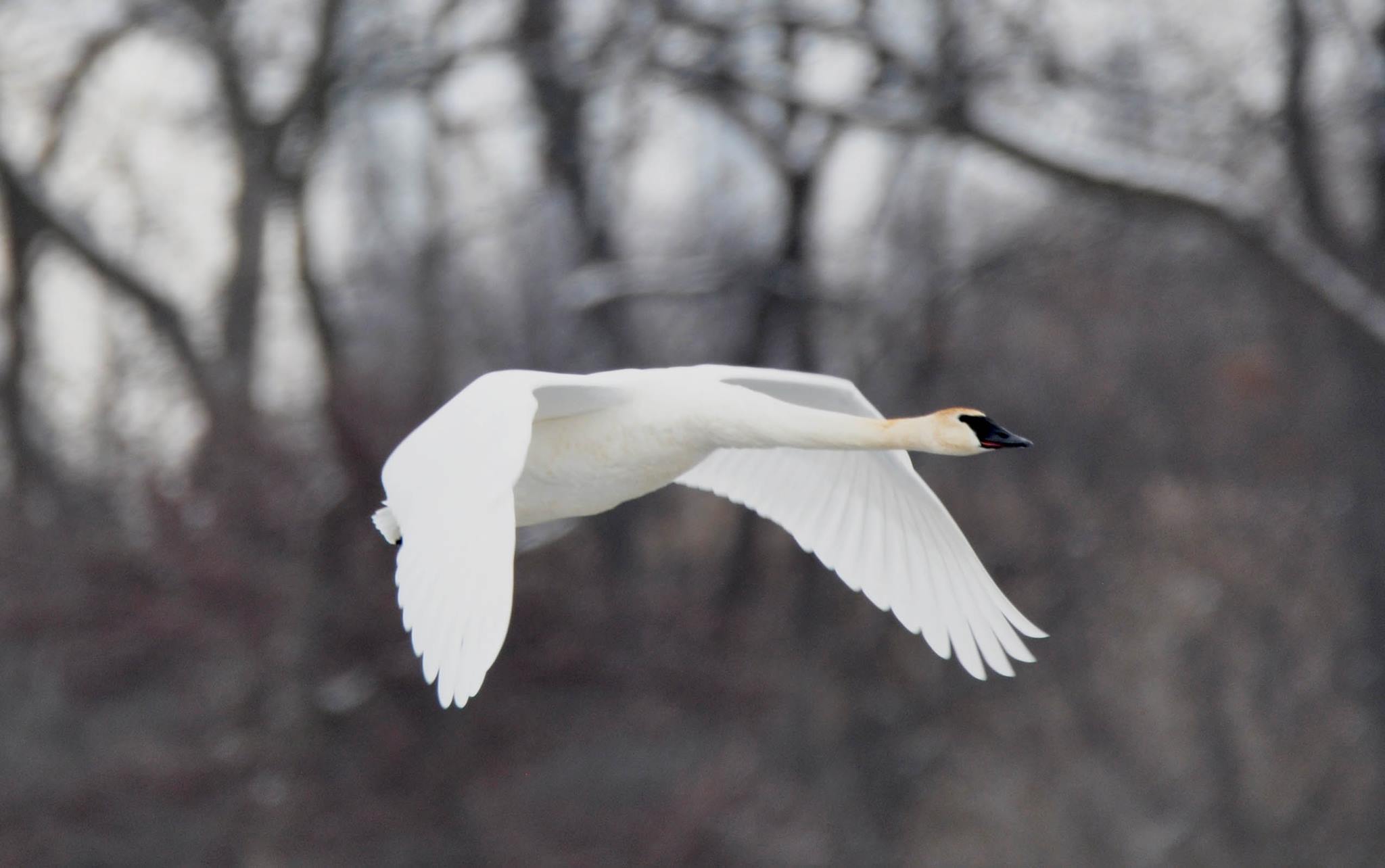What's the difference: Trumpeter swan vs. tundra swan vs. mute swan

Three swan species populate the waters and shorelines of North America — the trumpeter swan, the tundra swan and the mute swan. All three are large white birds, which can cause quite a bit of confusion about which bird is which, but with a little know-how you can tell these birds apart.
First, a little background on these birds may provide some clues in telling them apart from one another. Only two of the three swans — trumpeter and tundra swans — are native to this part of the Midwest. The mute swan — the kind of swan made famous in the classic Hans Christian Anderson fairy tale "The Ugly Duckling" — is native to Europe but was introduced in North America to decorate lakes and ponds in cities and towns across the United States, according to the Cornell Lab of Ornithology.
Because they were introduced to help decorate urban and suburban landscapes, they're the swans most often seen around ponds and lakes in our towns and cities, the Cornell Lab reports. Both trumpeter and tundra swans are most often seen in more natural habitats, but all three species can be seen in some of the same places.
Although mute swans are not native to Illinois, they have become established in the wild throughout the state, according to the Illinois Department of Natural Resources. Their presence has in some cases disturbed local ecosystems because they can be aggressive and they also have huge appetites, eating as much as 8 pounds of aquatic plants a day, Cornell Lab reports.
Mute swans are the easiest of the three birds to distinguish from the others based on their physical appearances because of one particular feature: their bills. Unlike trumpeter and tundra swans, mute swans have bright orange bills with a black knob at their forehead, according to The Trumpeter Swan Society.
Trumpeter swans and tundra swans can be more difficult to distinguish from each other because they both have black bills. The most telling characteristic between the two is a small yellow spot at the base of the bill that tundra swans have and trumpeter swans do not, The Trumpeter Swan Society reports. And if you can get a good, close look, trumpeter swans have a red line that looks like red lipstick where their upper and lower bills meet. Tundra swans do not have this "lipstick" line.
The positioning of the neck can also be a tell-tale clue about what swan species you are seeing, especially since this can be seen at a greater distance than some of the other physical characteristics. Mute swans' necks are curved, and their bills often point downward, giving the appearance of half a heart when looking at their profiles, according to the Michigan State University Extension. Trumpeter swans also have a curved neck, but their bills don't typically point downward, so they appear to have more of a C shape. Tundra swans hold their necks more vertically, giving them a straight up and down appearance.
Trumpeter swans and mute swans are larger than tundra swans, although unless the species are seen together the size difference is not always useful in helping to tell the birds apart. Trumpeter swans are the largest waterfowl species in North America, weighing between 16 pounds and 28 pounds with a wingspan of about 6 1/2 feet, according to the Cornell Lab. Tundra swans are considerably smaller, weighing between 8 pounds and 20 pounds with a wingspan of about 5 1/2 feet. Mute swans are similar in size to a trumpeter swan, but somewhat smaller.
The easiest way to tell a trumpeter swan from a tundra swan is by their calls, according to The Trumpeter Swan Society. Trumpeter swans have a loud call that resembles a bugle or trumpet, while a tundra swan has a more high-pitched call that has earned it the nickname "the whistling swan."
And although the name implies otherwise, mute swans aren't mute. Like the trumpeter swan, their call sounds like that of a bugle or trumpet, although it's much more muffled than a trumpeter swan's and doesn't carry as far, according to the Cornell Lab.
_______________
Stay up-to-date on the happenings in Will County's forest preserves by subscribing to The Citizen, our weekly digital newsletter that provides subscribers with updates on Forest Preserve news, upcoming events, and other fun and useful information for the whole family. If you're only interested in programs, subscribe to The Weekly Five, which outlines the five must-do programs each week. Signing up for either newsletter is easy and free of charge.
